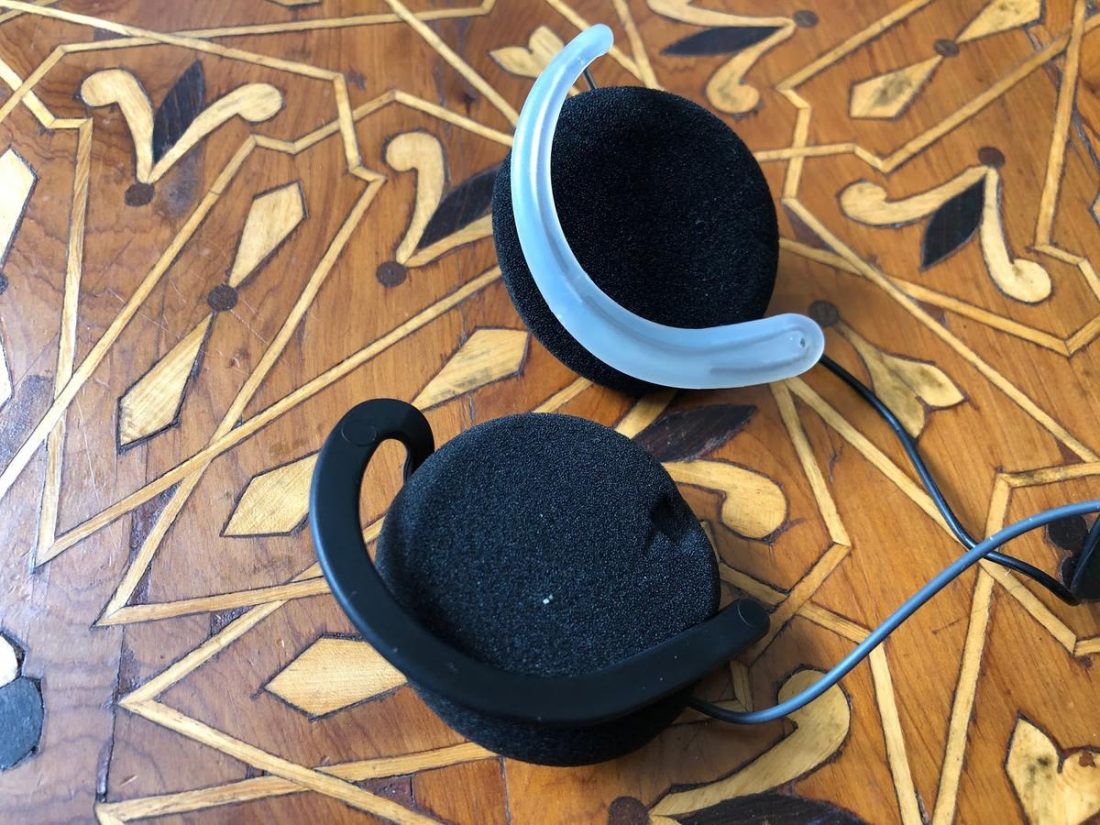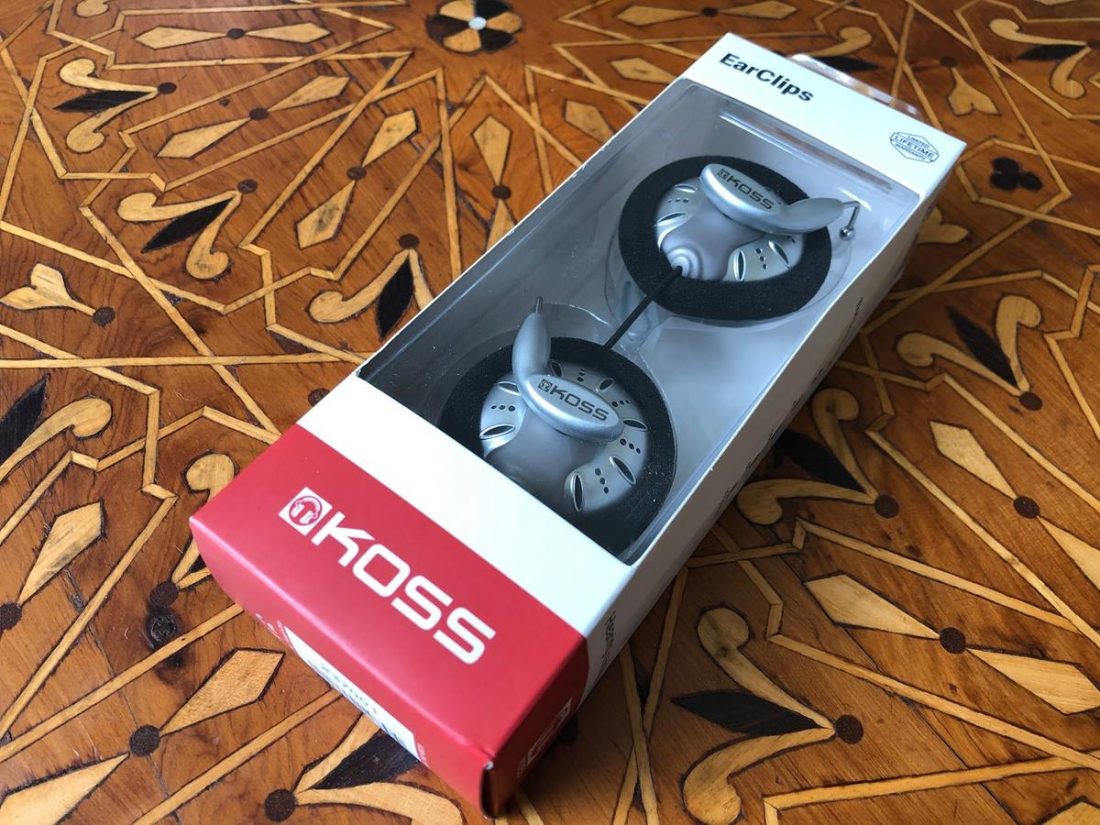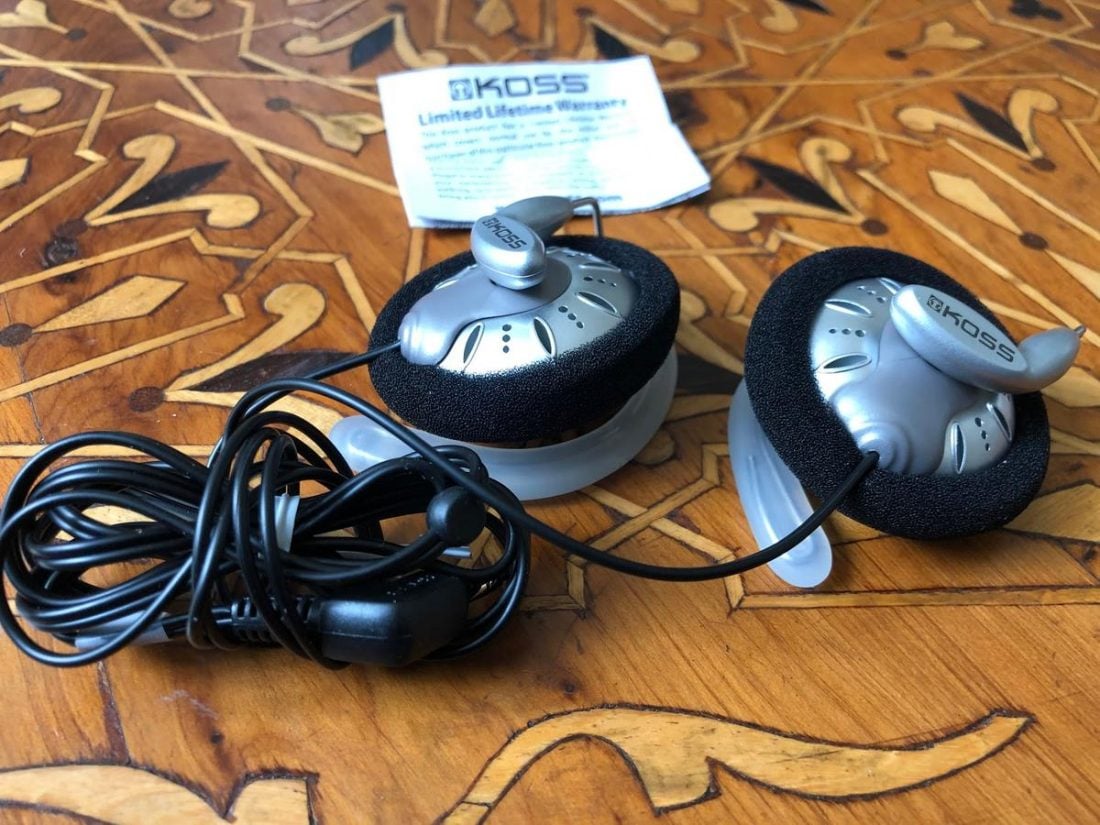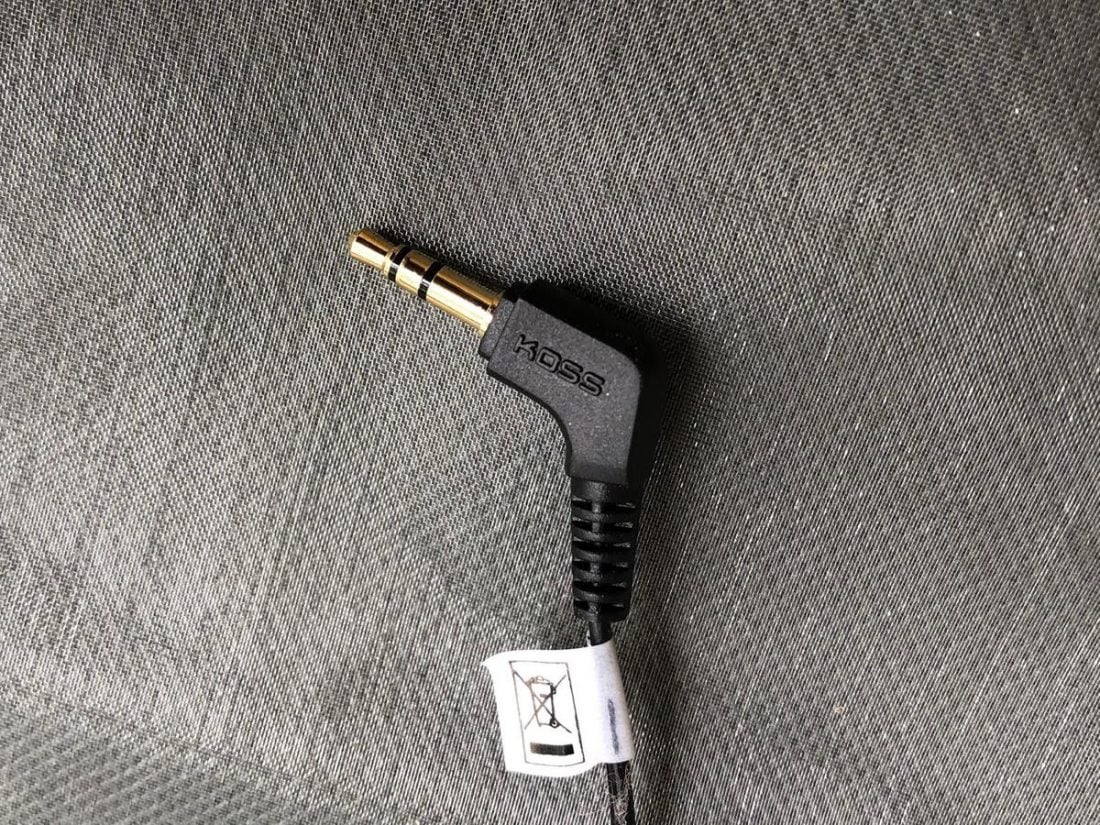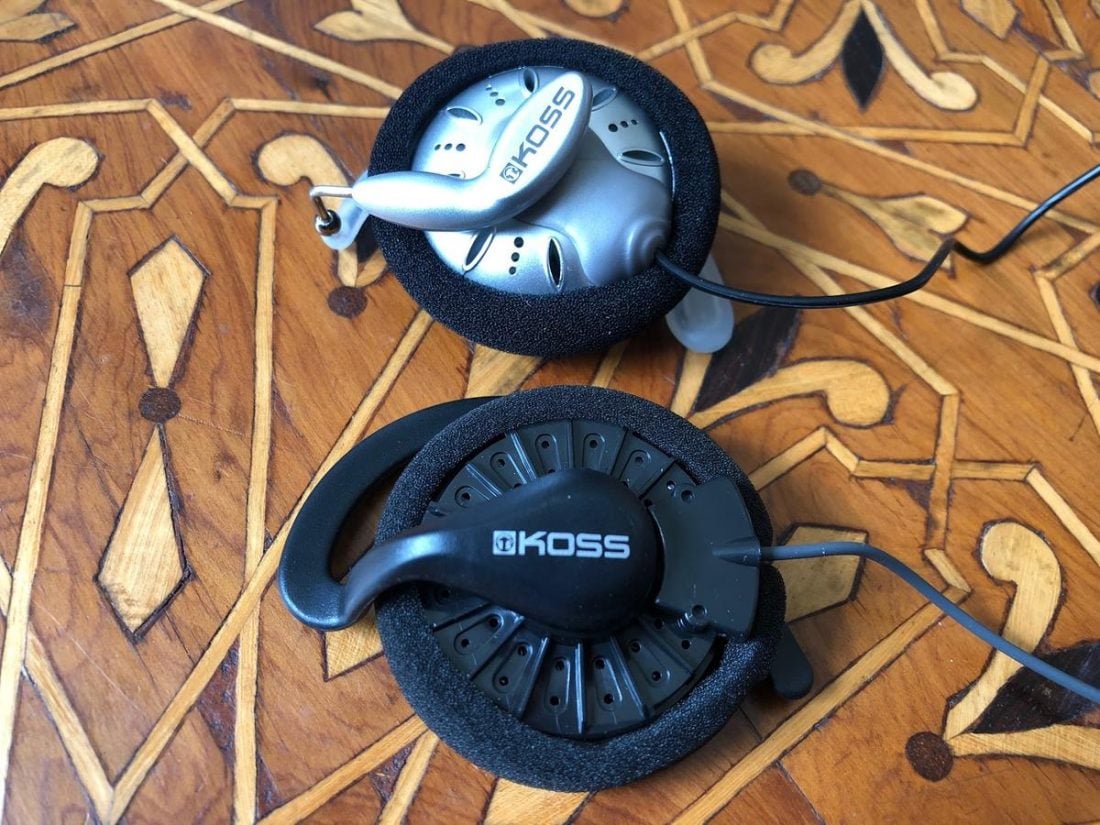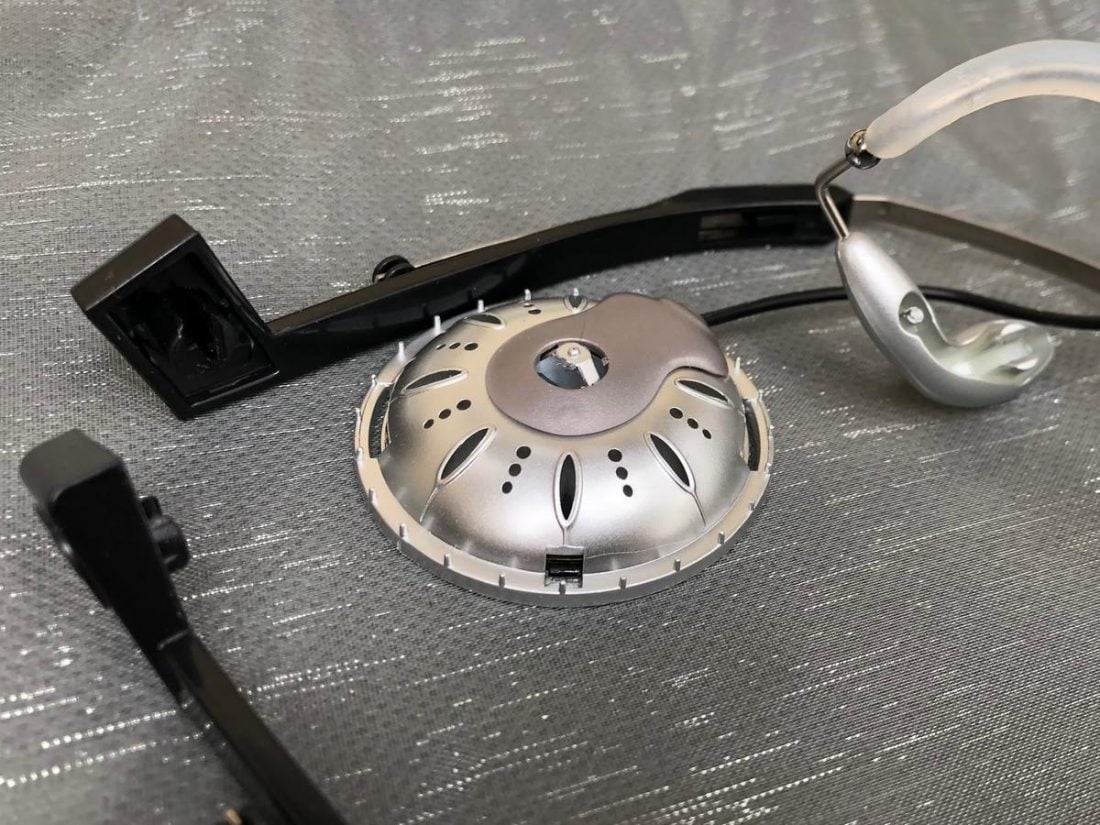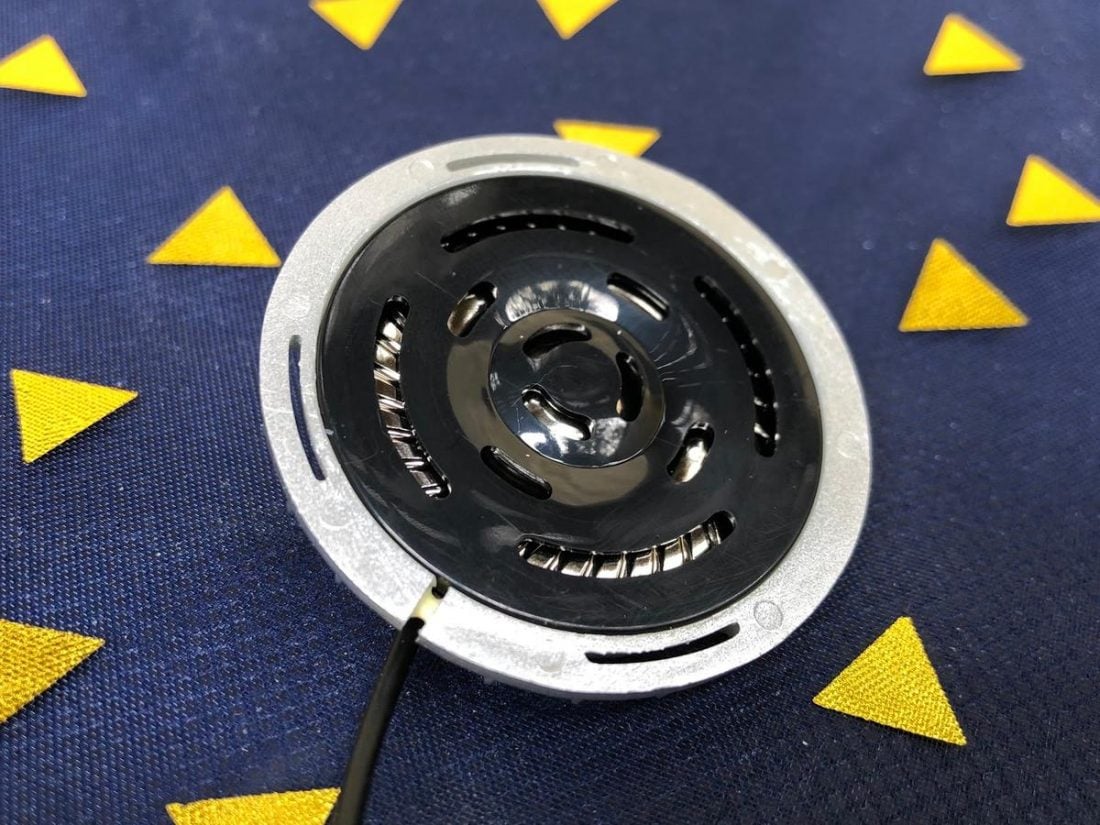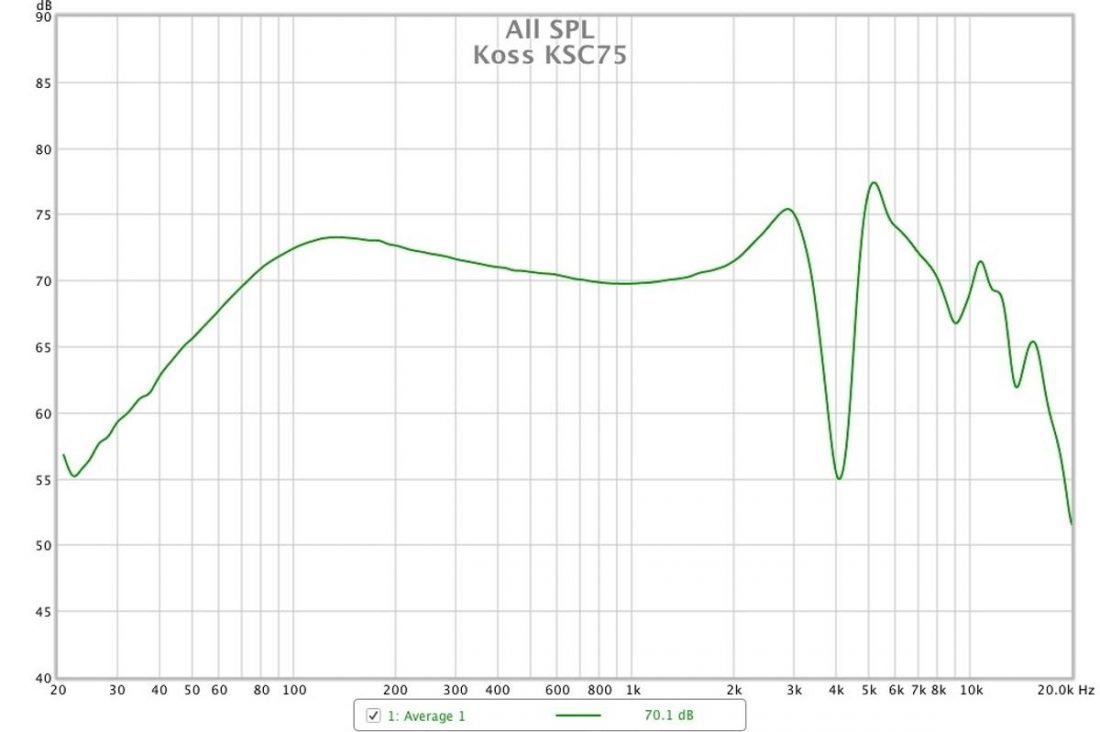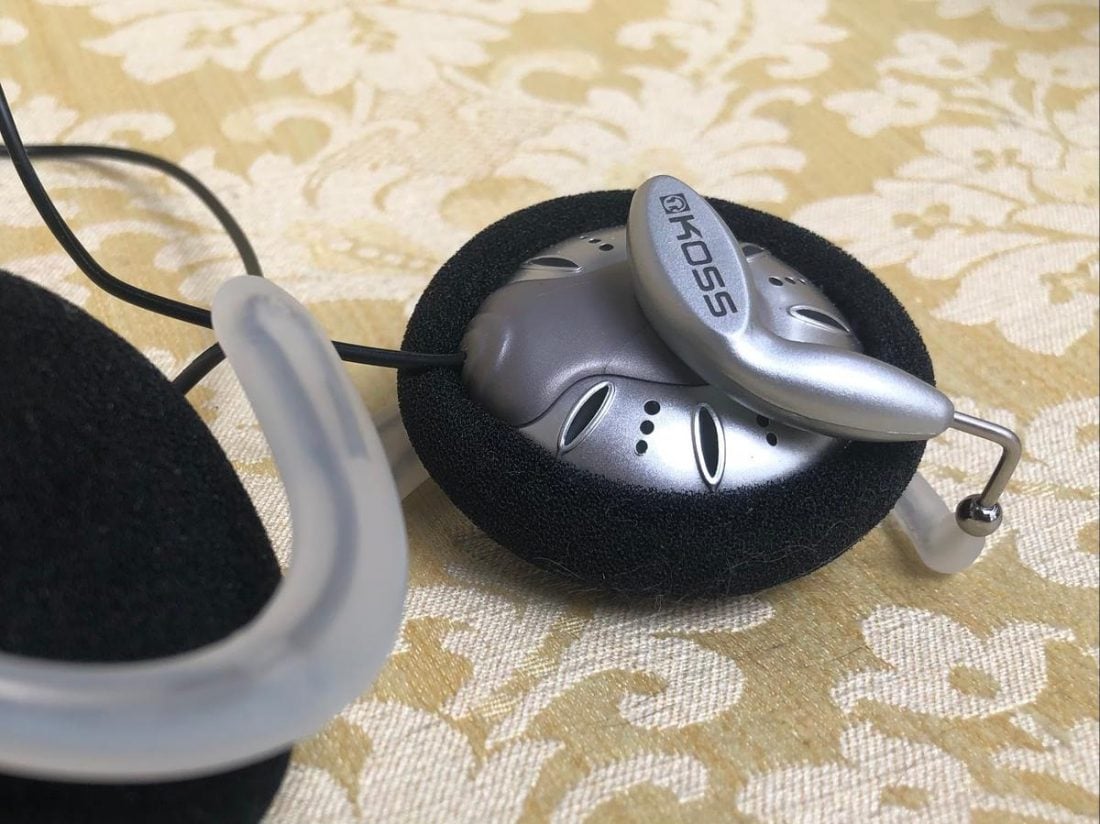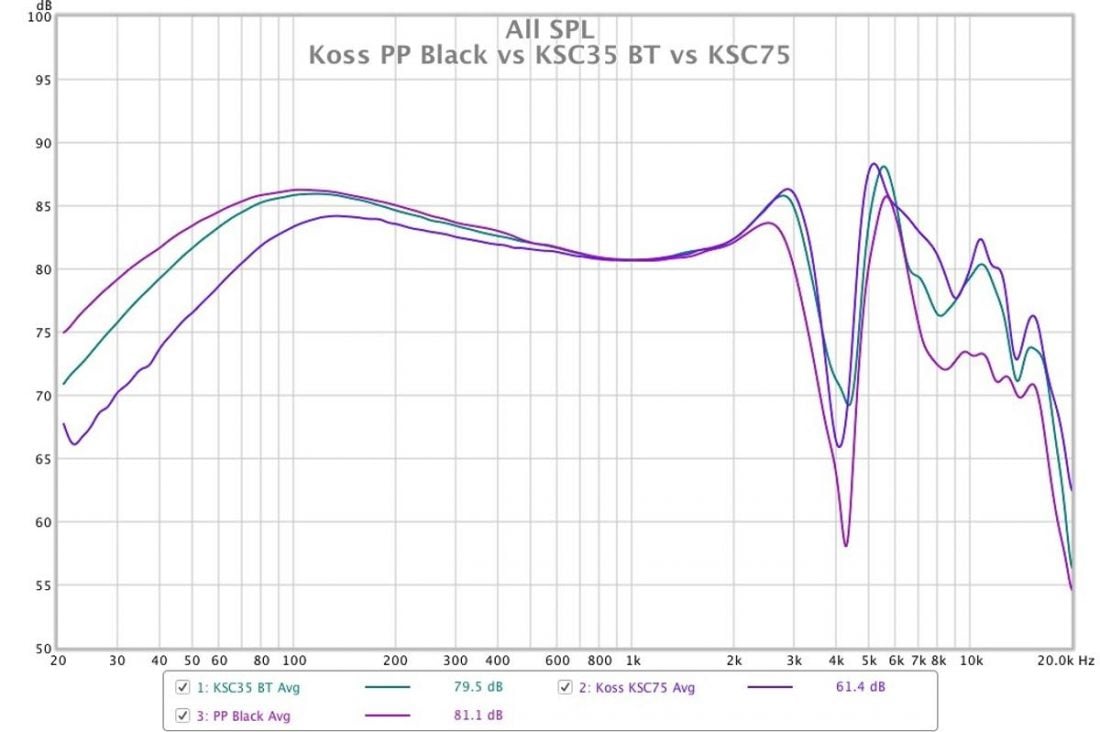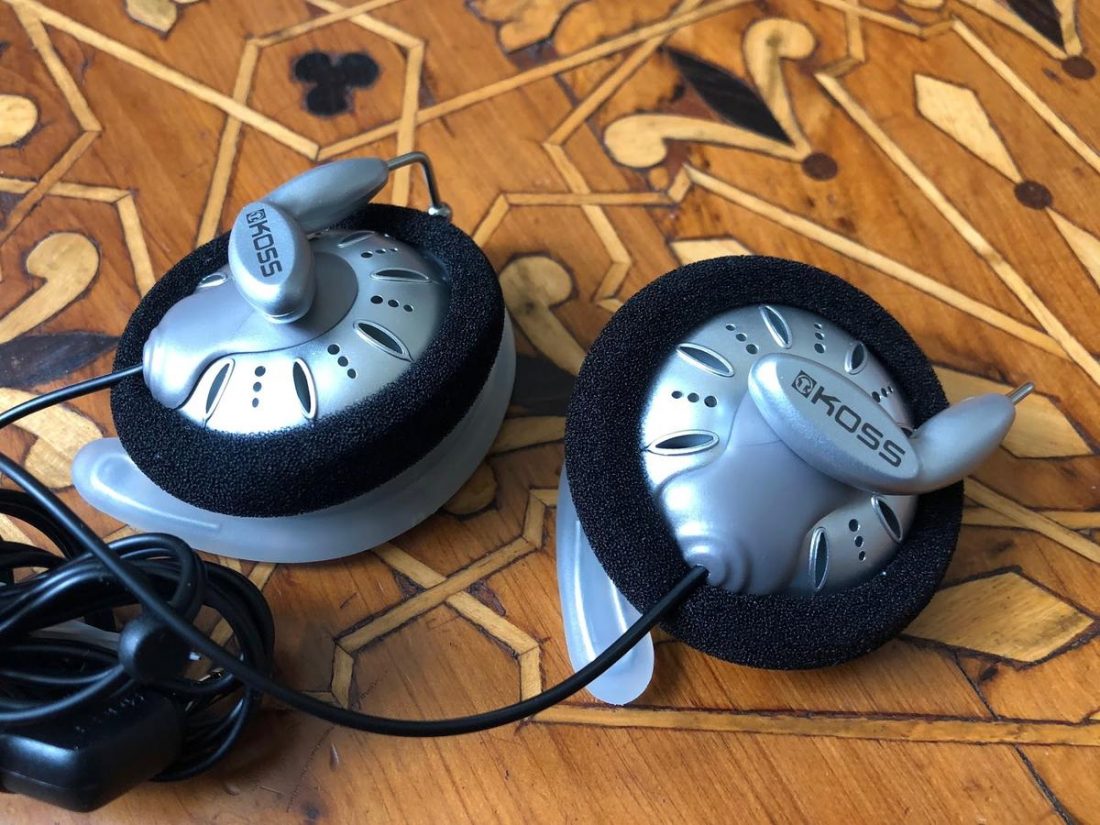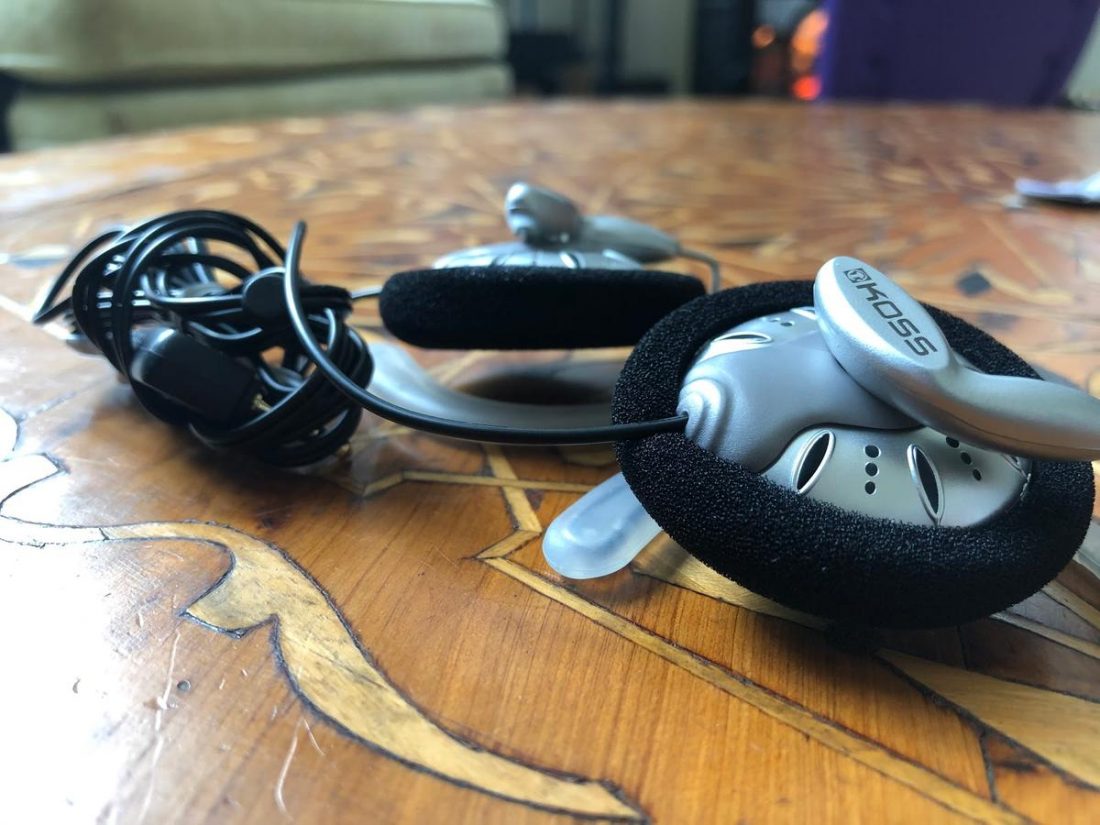Hot on the heels of my Koss KSC35 review, here is my take on the 10-year younger Koss KSC75. That isn’t to say that they are new to the market, in fact, the KSC75 debuted way back in 2005 as a less expensive alternative to the KSC35 ear clip style headphones. The KSC35 are very similar to the renowned Koss Porta Pro, sharing the same driver and plastic enclosure but with ear clips rather than a headband. Although the KSC75 are like the KSC35 in shape and size, they do bring something significantly different to the table. Titanium! I (and many others) have gone on at length about the superb 60ohm, 35mm driver found in the Porta Pro, Sporta Pro, KPH30i, and the KSC35. Koss uses a titanium-coated version in the UR40, KTXPro1, and KSC75. This extraordinary driver defines this legendary series of headphones and has been in constant production and daily use for almost four decades! Koss headphones with the 60ohm driver are important staples in the portable headphone industry. Koss creates different sounding (and looking) headphones all based around this single driver, displaying remarkable longevity and success. While many share very similar sound signatures, the KSC75 are one of the notable outliers. By using titanium-coating and distinctively shaped silver plastic enclosures, the KSC75 produce a unique listening experience. And although significantly less expensive than their KSC35 sibling, the KSC75 feature rubber-coated spring steel ear clips rather than the former’s rigid plastic clips. Many have extolled the virtues of these headphones that cost about the same as a lunch for two at your favorite fast food joint. It’s time to find out if the KSC75 are the giant killers they are said to be. Do they really sound good enough to put headphones many times their price to shame? How do they compare to their numerous brothers and sisters sharing the same driver? Time to dive into the KSC75.
Company Overview
Headquartered in Milwaukee, WI, Koss Corporation is the quintessential classic American headphone company. John Koss and his partner Martin Lange JR. developed the “world’s first stereophones, the SP/3” in 1958. The SP/3 were intended to be an accessory for their new stereo record player, but stole the spotlight. Koss eventually branched out into creating home theaters, DVD players, portable media players (MP3), tabletop stereo systems, and boom boxes but has since closed the “Koss Electronics” line. Koss Corporation now focuses on what they do best, manufacturing both dynamic and electrostatic headphones and microphones.
Technical Specifications
Form: Ear clip portable headphones Drivers: 35mm titanium-coated dynamic driver Impedance (Ohm): 60 Sensitivity (dB): 101 dB SPL/1mW Frequency Response (Hz): 15 Hz – 25 kHz Removable Cable: N Source Jack: 3.5mm Weight (g): 43
Packaging
The KSC75 come in the standard Koss packaging, white with red highlights. The KSC75 are visible through a large plastic front window and are held securely in more clear plastic. Plastic, plastic, and more plastic.
In the box
KSC75 Warranty paper
While this may be the sparsest list of included accessories ever, what more can you expect for the price?
Cable
If you’ve ever had a pair of wired Koss headphones before, you’ll be very familiar with the ±130cm, black plastic, dual-wire cable and the gold-plated, angled 3.5mm plug. Delightfully old-school and retro? Or just a functional but dated design. All of the above. I’ve seen complaints about the cable’s longevity, but I have Porta Pros that are decades old and have this same cord. It’s not fancy, but it’s entirely serviceable. The fixed cable does tend to get snagged easily, and if you are like me, you may find yourself accidentally pulling the KSC75 off your head fairly frequently.
Design
Let’s be honest with each other. The KSC75 look and feel every bit of their oh-so-low price tag. Shiny silver plastic never seems premium or expensive. And yes, one can draw unfortunate parallels with the free headsets offered on airplanes. The clear rubber-covered metal ear clips are the highlight of the design, as they are smooth and sturdy. The plastic driver enclosure differs from the one used on the KSC35 and Porta Pro. It’s curved rather than flat (meaning it has more internal volume) and has larger vents around the back’s circumference. The KSC75’s looks are entirely functional, but they are likely not going to be embraced by fashionistas. The driver mounting mechanism is the same design found on the Porta Pro and the KSC35, which means that the bands and clips are interchangeable. This standardization allows for lots of consumer modifications and personalization options. The sub (less than $5) Parts Express headband works well to maintain the light weight and to change the KSC75 to a standard headband style.
Comfort
Their light weight goes a long way to maintaining wearing comfort. Although I prefer a traditional headband, the KSC75 ear clips are reasonably easy to wear for moderately long listening sessions. The ear pads are (unfortunately) the standard thin Koss foams. The multi-colored, thicker, and comfier Yaxi ear pads are my strongly suggested first upgrade (although they are a somewhat significant financial investment for headphones this inexpensive). The ear clips do a reasonably good job at keeping the KSC75 securely in place while minimizing pressure on the ears. These are another excellent headphone choice for outdoor walks or light jogging. They allow plenty of noise in and out, so you aren’t likely to miss hearing an oncoming car, home run ball, or angry canine.
Internals
I know, that you know, that I know you know, that I like the 60ohm, 35mm Koss driver. A lot. It’s INCONCEIVABLE that you do not. Princess Bride humor aside, what differentiates the KSC75 driver from the one found in the Porta Pro or KSC35 is titanium. The diaphragm receives an extremely thin layer of titanium bonded to its surface. Titanium is a popular choice for driver manufacturers as it has the highest strength-to-weight ratio of any metal. So, what does the addition of a super-thin, super-strong, and super-light metal coating actually do? In practice, it stiffens the diaphragm without adding significant mass, which is intended to boost detail, precision, and clarity. At least in theory.
KSC75 Sound
Ok, ok… it seems to also work in practice. The KSC75 are noticeably more upper frequency focused than their non-coated brethren. Their open design and subdued bass (plus low price) make them a viable introduction for critical listeners. They offer a no-risk option for checking out a different sort of sound signature. The KSC75 are not commercially tuned, and don’t display the questionably popular combination of low frequencies dialed up to 11, a missing midrange and peaky treble to yield some resolution. The midrange is the most forward and emphasized part of the KSC75’s response. Their overall tonality is quite natural sounding. Their combination of low wearing pressure and open-back design yields a respectable sound stage, with decent instrument separation. The minimal low-end means impact and dynamics are somewhat subdued, but they avoid sounding too thin for the most part. Overall the KSC75 come across as being on the brighter side of neutral, with very limited sub-bass and average high-end extension. Detail and imaging are only ok when considered on an absolute scale, but for the price, the KSC75 do far more right than perhaps any other headphones at their price point and are better sounding than many significantly higher-cost models.
Bass
Low frequency response is very limited, likely due to the titanium-coated diaphragm’s stiffer nature and perhaps the unique driver housing and venting. Upper bass frequencies are reasonably tight and punchy, with a bit of an emphasis, but let me stress that these are not suitable headphones for bass-heads. The KSC75 are far more appropriate for non-heavy-bass music genres and are not the first choice for EDM.
Midrange
Midrange frequencies are the star of the KSC75 show and are reasonably balanced. Vocals stand out in the mix, and voices sound consistent and natural if a touch thinner and less warm than is my ideal. The detail is really quite good, and things sound clear and clean.
Treble
A relatively quick and steep roll defines the treble off after about 5kHz. Low treble is a bit boosted, which helps with the feeling of clarity and presence in vocals and instruments. The KSC75 do sound fairly bright but avoid excess edginess or sharpness.
Comparisons
The chart above shows my relative rankings per category. 1 is highest and 4 is lowest. These ratings are only in reference to each other. What is obvious from the chart above is that I rate the Porta Pro (wired and wireless versions) and the KPH30i above the KSC35 and KSC75 in basically all categories. Full disclosure, I’ve owned the Porta Pros for decades and love them. There are currently 4 pairs of them kicking around my home, and my wife has permanently adopted the wireless Porta Pros. I can’t argue the value proposition presented by the KSC75. Their low price does much to offset any concerns with their limitations. While I prefer the Porta Pro, they are far more expensive than the KSC75. The Porta Pro are warm-sounding headphones with far more prominent bass than the KSC75. Where the KSC75 have more upper energy and seem slightly more resolving, the Porta Pro have more presence, although with bass heavy music they can tend towards boominess and bloom. I find the Porta Pro to have superior sonic balance and are a better match for my tastes. The Porta Pro share the same cable as the KSC75, but in every other way, they are better built, more attractive, and offer greater comfort than their ear-clipped relations. If you prefer the Porta Pro sound but want a midrange price point and ear clips, the Bluetooth KSC35 are a viable option.
Where to Buy
Conclusion
It’s impossible to argue with or ignore the value proposition of the KSC75. They deserve their notoriety as bang-for-the-buck staples in the portable audio world. Their performance is far beyond the standard set for their price point; they really can compete with the sound quality of much more expensive headphones. But that’s only applicable in the ±$100 (or so) range. If you continue up the headphone ladder, more expensive headphones bring improved sound quality, more premium materials, better build, and far superior aesthetics. But if budget is the dominant factor in your decision-making, the KSC75 are on a very short list of contenders with this sort of price-performance ratio. The KSC75 lean towards a refined and audiophile sound, more suited to critical listening than vibrating your brains out with boosted bass. They are a great option for listening to audiobooks that benefit from clarity and vocal presence. While far from luxurious, the KSC75 are worth picking up for every budding audiophile, even if it is just to see what all the fuss is about.

